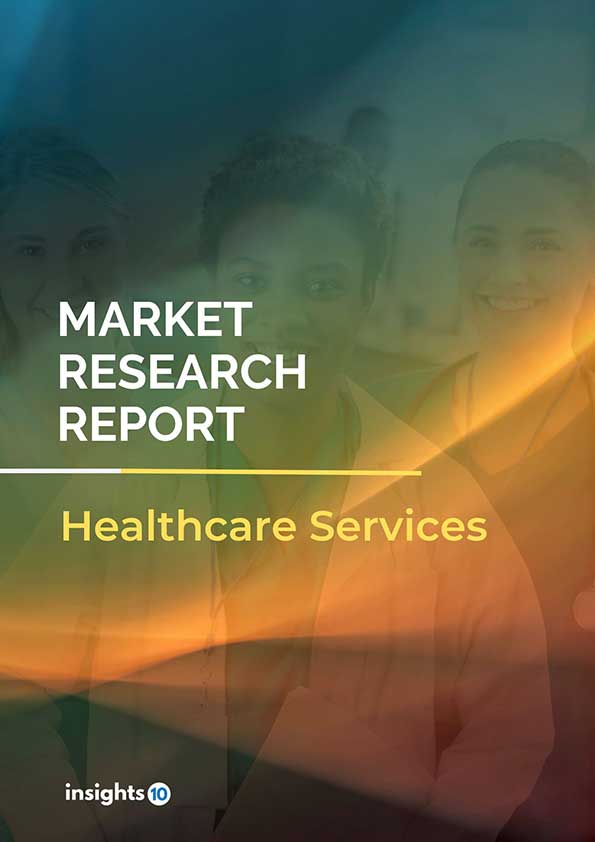Vietnam Medication Access Programs Market Analysis
The Vietnam Medication Access Programs Market was valued at $27.4 Mn in 2023 and is predicted to grow at a CAGR of 14.83% from 2023 to 2030, to $72.3 Mn by 2030. The key drivers of this industry include public-private partnerships, government support, and increasing disease burden. The industry is primarily dominated by players such as Takeda Pharmaceuticals, Pfizer, Novartis, and Merck among others.
Buy Now

Vietnam Medication Access Programs Market Executive Summary
The Vietnam Medication Access Programs Market was valued at $27.4 Mn in 2023 and is predicted to grow at a CAGR of 14.83% from 2023 to 2030, to $72.3 Mn by 2030.
Patient Support Programs (PSPs) are initiatives organized by pharmaceutical companies to enhance access, usage, and adherence to prescription drugs. These programs encompass financial assistance, clinical support, educational efforts, or a blend of these elements. A Medication Access Program (MAP) is a part of PSP that serves as a crucial connection between patients and the medications they need. Managed Access Programs are initiatives that enable patients with serious or life-threatening illnesses to obtain investigational medicines or treatments not yet commercially available. These programs aim to provide early access to therapies for patients who have exhausted all other options and are ineligible for clinical trials. Offered by pharmaceutical companies, MAPs help patients overcome financial barriers to access essential medications. A centralized, pharmacy-driven MAP can enhance patient outcomes, reduce unnecessary healthcare costs, improve patient and provider satisfaction, streamline patient flow, and boost revenue through increased prescription capture.
A study in southern Vietnam revealed that 13.1% of HIV/AIDS patients showed poor adherence to antiretroviral therapy (ART). Novartis, together with the Ministry of Health and Vietnam Social Security, has supported approximately 8,000 patients with Chronic Myelogenous Leukemia (CML) and Gastrointestinal Stromal Tumor (GIST) by providing access to high-quality medications. The market is driven by significant factors like public-private partnerships, government support, and increasing disease burden. However, regulatory challenges, infrastructure and logistics, and awareness and education restrict the growth and potential of the market.
Prominent players in this field include Takeda Pharmaceuticals which provides Access to Medicine Program. Pfizer, Novartis, Merck, and AstraZeneca among others are some of the pharmaceutical companies providing patient support programs and are potential players for the Medication Access Program in Vietnam.

Market Dynamics
Market Growth Drivers
Public-Private Partnerships: Public-private partnerships involving Novartis, the Ministry of Health, and Vietnam Social Security have provided high-quality medications like imatinib and nilotinib to 8,000 patients with Chronic Myelogenous Leukemia (CML) and Gastrointestinal Stromal Tumor (GIST) through initiatives such as the Global Imatinib Patient Access Program (GIPAP) and Vietnam Patient Access Program (VPAP), at no cost. This collaboration drives the medication access program market in Vietnam by demonstrating effective models that improve patient access to essential treatments and encourage further program expansion.
Government Support: Government initiatives in Vietnam aimed at improving healthcare access, including medications, drive pharmaceutical companies to invest in access programs, serving as a key market driver.
Increasing Disease Burden: High rates of non-communicable diseases (NCDs), such as cardiovascular disease, cancer, diabetes, hypertension, and chronic obstructive pulmonary disease, contribute significantly to mortality (72%) and disease burden (66%) in Vietnam. This health profile drives the medication access program market by increasing the demand for effective treatments and encouraging pharmaceutical investment in access initiatives.
Market Restraints
Regulatory Challenges: Complex regulatory processes and approval requirements in Vietnam can delay the rollout of new medications and access programs, affecting their timely availability and implementation in the market.
Infrastructure and Logistics: Challenges in healthcare infrastructure, distribution networks, and logistics can hinder the efficient delivery of medications to remote and rural areas in Vietnam, restricting the reach and effectiveness of medication access programs.
Awareness and Education: Low awareness among patients and healthcare providers about access programs' availability and benefits may limit their use and impact in Vietnam's medication access market.
Regulatory Landscape and Reimbursement Scenario
Vietnam's Ministry of Health (MoH) serves as the national regulatory authority for healthcare. The Drug Administration of Vietnam (DAV), under the MoH, oversees the drug approval process in the country. According to Decree 54/2017/ND-CP, Article 68, drugs needed for specialized treatments based on hospital demand can be imported, even without local marketing authorization. The DAV processes import licenses within 60 working days.
Under Vietnam's social health insurance scheme, medications listed on the National Reimbursement Drug List (NRDL) receive partial coverage. Some private health insurance plans may offer additional coverage for medications, potentially including those not on the NRDL, although this coverage is not widespread and may have limitations.
Competitive Landscape
Key Players
Here are some of the major key players in the Vietnam Medication Access Programs Market:
- Takeda Pharmaceuticals
- Pfizer
- Novartis
- Merck
- AstraZeneca
- Bristol-Myers Squibb
- Sanofi
- Eli Lilly
- AbbVie
- Roche
1. Executive Summary
1.1 Service Overview
1.2 Global Scenario
1.3 Country Overview
1.4 Healthcare Scenario in Country
1.5 Healthcare Services Market in Country
1.6 Recent Developments in the Country
2. Market Size and Forecasting
2.1 Market Size (With Excel and Methodology)
2.2 Market Segmentation (Check all Segments in Segmentation Section)
3. Market Dynamics
3.1 Market Drivers
3.2 Market Restraints
4. Competitive Landscape
4.1 Major Market Share
4.2 Key Company Profile (Check all Companies in the Summary Section)
4.2.1 Company
4.2.1.1 Overview
4.2.1.2 Product Applications and Services
4.2.1.3 Recent Developments
4.2.1.4 Partnerships Ecosystem
4.2.1.5 Financials (Based on Availability)
5. Reimbursement Scenario
5.1 Reimbursement Regulation
5.2 Reimbursement Process for Services
5.3 Reimbursement Process for Treatment
6. Methodology and Scope
Vietnam Medication Access Programs Market Segmentation
By Disease Type
- Chronic
- Acute
By Therapeutic Areas
- Oncology
- Cardiology
- Rheumatology
- Others
By Patient Type
- Geriatric
- Pediatric
- Adult
Methodology for Database Creation
Our database offers a comprehensive list of healthcare centers, meticulously curated to provide detailed information on a wide range of specialties and services. It includes top-tier hospitals, clinics, and diagnostic facilities across 30 countries and 24 specialties, ensuring users can find the healthcare services they need.
Additionally, we provide a comprehensive list of Key Opinion Leaders (KOLs) based on your requirements. Our curated list captures various crucial aspects of the KOLs, offering more than just general information. Whether you're looking to boost brand awareness, drive engagement, or launch a new product, our extensive list of KOLs ensures you have the right experts by your side. Covering 30 countries and 36 specialties, our database guarantees access to the best KOLs in the healthcare industry, supporting strategic decisions and enhancing your initiatives.
How Do We Get It?
Our database is created and maintained through a combination of secondary and primary research methodologies.
1. Secondary Research
With many years of experience in the healthcare field, we have our own rich proprietary data from various past projects. This historical data serves as the foundation for our database. Our continuous process of gathering data involves:
- Analyzing historical proprietary data collected from multiple projects.
- Regularly updating our existing data sets with new findings and trends.
- Ensuring data consistency and accuracy through rigorous validation processes.
With extensive experience in the field, we have developed a proprietary GenAI-based technology that is uniquely tailored to our organization. This advanced technology enables us to scan a wide array of relevant information sources across the internet. Our data-gathering process includes:
- Searching through academic conferences, published research, citations, and social media platforms
- Collecting and compiling diverse data to build a comprehensive and detailed database
- Continuously updating our database with new information to ensure its relevance and accuracy
2. Primary Research
To complement and validate our secondary data, we engage in primary research through local tie-ups and partnerships. This process involves:
- Collaborating with local healthcare providers, hospitals, and clinics to gather real-time data.
- Conducting surveys, interviews, and field studies to collect fresh data directly from the source.
- Continuously refreshing our database to ensure that the information remains current and reliable.
- Validating secondary data through cross-referencing with primary data to ensure accuracy and relevance.
Combining Secondary and Primary Research
By integrating both secondary and primary research methodologies, we ensure that our database is comprehensive, accurate, and up-to-date. The combined process involves:
- Merging historical data from secondary research with real-time data from primary research.
- Conducting thorough data validation and cleansing to remove inconsistencies and errors.
- Organizing data into a structured format that is easily accessible and usable for various applications.
- Continuously monitoring and updating the database to reflect the latest developments and trends in the healthcare field.
Through this meticulous process, we create a final database tailored to each region and domain within the healthcare industry. This approach ensures that our clients receive reliable and relevant data, empowering them to make informed decisions and drive innovation in their respective fields.
To request a free sample copy of this report, please complete the form below.
We value your inquiry and offer free customization with every report to fulfil your exact research needs.








































